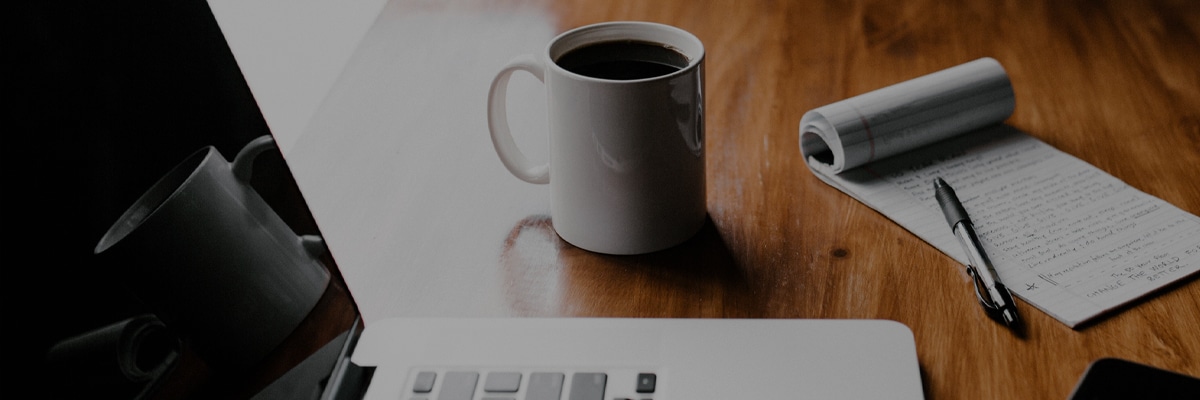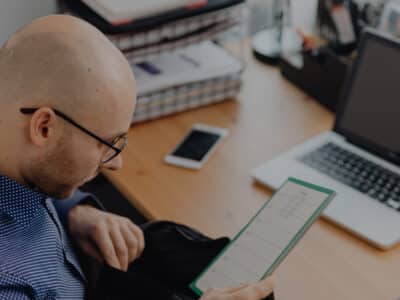
Fair personal use – what is it and when is it allowed?
Fair personal use is a very important concept of Polish copyright law, which, however, has been surrounded with more and more controversy recently. So what exactly is fair personal use and who and when can exercise such a right?
Each area of law is a more or less successful compromise between conflicting tendencies, concepts or interest groups. It is no different for the copyright law. Here the interests of authors of works subject to copyright and the interests of recipients and users of these works clash. And so, on the one hand, the Act on Copyright and Related Rights provides for relatively extensive rights and privileges of author(s), also of a financial nature, and on the other hand, it guarantees the users of work a fairly wide catalogue of rights referred to collectively as fair use. This catalogue contains the right called fair personal use.
Fair use – the art of compromise
The idea behind author’s economic rights, whether in the civil law (continental) system or in the common law system, is a compromise between the opposing and seemingly irreconcilable interests of two different interest groups: authors/ rightholders of author’s economic rights and end-users/general society.
On the one hand, it is fair and understandable to grant the author of a work protection of their interests, manifested in the right to use and dispose of the work, and the right to remuneration for its use. The author should have control over their work, over the way it is used. The author should also be able to reap the rewards of their creative contribution.
On the other hand, the interest of society must be weighed – potential end-users of the work, who, naturally, want to have free and unrestricted access to content protected by copyright, and as we know, knowledge and access to that content are necessary for cultural, economic, scientific and technological development.
In order to reconcile those two opposing attitudes and expectations, a concept of fair use was created, which allows, of course, in strictly defined cases, to use the protected work without the need to obtain the consent of the rightholder of author’s economic rights and without the need to pay remuneration.
Fair use is not a uniform concept and is divided into different categories, with the basic and most widespread being the division into fair public and personal use. The former constitutes a statutory authorisation for the use of works due to cultural, educational and scientific needs of society, while the latter constitutes a personal use of protected works.
Allowed to use, but not always
According to the first sentence of Article 23(1) of the Copyright Law, it is permitted to use free of charge the work having been already disseminated for purposes of personal use without the permission of the author.
The concept of fair use, including fair personal use, revolves around the concept of “use”. It is a broad concept with many meanings. On the one hand, the use of a work can be listening, watching or reading it. However, it is not these activities that underlie fair use, because for them the consent of the author is not required anyway and they do not infringe the interests or rights of copyright holders.
Therefore, the use, within the meaning of the provisions defining fair use, includes such behaviours that – in the absence of fair use – would belong to an exclusive domain of the author / other holder of author’s economic rights, i.e. such behaviours that fall within one of the fields of use, such as copying works, recording them on electronic media, or reproducing or displaying. Such conduct constitutes an interference with an absolute and exclusive rights of the author, but is not regarded as unlawful in the case concerned.
Of course, the absence of unlawfulness of fair personal use depends on the fulfilment of certain requirements. First of all, such interference with copyrights permitted by law must be done by a natural person – for their own needs or for their family or friends’ needs. In addition, it refers to disseminated works, i.e. made available to the public in any way with the consent of the author. In principle, it is also necessary to provide authorship and source of a specific work.
It should be remembered that the author’s economic right is an absolute right, which means that there is a presumption of unlawfulness when it is infringed. For that reason, the person evoking action within the limits of fair use must demonstrate fair use. In addition, the burden of proof lies with the user to prove that fair use does not conflict with a normal exploitation of the work and does not prejudice the legitimate interests of the author.
Personal fair use allows to use the work without the consent of its author or other holder of author’s economic rights, or even despite the author’s objection. Even an explicit author’s objection or prohibition to use the work will be ineffective in the sphere of personal use.
What exactly is personal use
The purpose of fair personal use is to satisfy the end-user’s personal needs. These may be educational, scientific, spiritual or cultural needs. Fair personal use is available to an individual as part of their personal activity. This covers all non-commercial activity of such a natural person. One of the conditions for fair use is that it is free of charge. An individual may not derive financial benefits from the restriction of someone else’s copyright.
The exercise of fair use is possible, in principle, without other persons. However, there is an exception to this principle allowing the use of single copies of works by a circle of people in a personal relationship – i.e. in a relationship of kinship or affinity or in a social relationship.
What is this social relationship? I think that we can talk about a social relationship when we are dealing with people who know each other personally and in reality (and not, for example, only through social networking sites or discussion groups). This includes partners, friends and acquaintances with whom the eligible person maintains permanent (regular), voluntary and personal social relationships. Certainly, it will not be possible to speak of a social relationship with regard to people with whom we have exclusively or predominantly a professional, official, social or political bond.
Importantly, fair use should not be treated as a “tool of last resort”. The beneficiary has the right to enjoy fair use even if certain needs (access to cultural goods, educational and scientific needs, etc.) could be satisfied in other way. The beneficiary cannot be required to demonstrate, before seeking fair use of a protected work, to satisfy those needs in a way that does not constitute a restriction of another person’s author’s economic rights.
Lawfulness of copies
Article 23 of the Copyright Law refers only to the need to disseminate the work beforehand. However, it does not address the question of legality of the source of such a work. This is a controversial issue that is not clearly assessed in the legal literature. Currently, in the era of universal access to good quality Internet with high data transfer speeds, this issue is becoming particularly important. It often happens that after the work has been made available (disseminated) with the consent of the author, it is then further disseminated unlawfully, i.e. without the consent of the author by various technical means, such as common P2P networks.
The CJEU* took a stance that incompatible with EU law are national legal solutions equating (not distinguishing) a situation in which the source used as the basis for making a copy for personal use is legal, with a situation in which that source is illegal.
Thus, it seems that the CJEU is inclined towards the need to use legal copies. However, the user is often not able to assess whether the content they are reading and downloading to their computer disk has been made available legally. This happens, for example, when we use streaming services.
It seems to me that an indirect, compromise view should be adopted. According to it, a user who downloads a work in an electronic version and has reason to believe that this work was originally disseminated in a lawful manner, with the consent of the author, will be able to invoke the right resulting from fair personal use.
The principle of good faith would therefore be applied here. In my opinion, it should be noted that Article 23 refers to “the work having been already disseminated”, i.e. the work that has been disseminated (that is: for the first time), i.e. with the consent of the author of the work has been made available to the public in whatever way. From the point of view of fair use, it is not important what the further fate of the work was, whether it was further reproduced or made available with the consent of the author or not.
A different, more restrictive interpretation would, in my view, be contrary to the requirements of the modern information society, which is characterised by free access and freedom to receive and transmit information.
However, there is one more point that needs to be noted. When using P2P networks, the user is usually subject to two different actions: download and upload. While the download itself is not controversial in the light of the above arguments, the uploading of a work or part of it to other users means that it is not possible to speak of fair personal use. In this case, it cannot be said that copies of the work are used by persons in a personal or social relationship. In this case, we can certainly talk about the infringement of copyrights.
Exceptions to fair use, borderline cases
Fair personal use will not apply to all categories of works. Article 23(1) explicitly excludes the possibility to build constructions according to other authors’ architectural works as well as architectural and town planning works and to use electronic data bases (unless this applies to one’s own scientific use not connected with any profit-gaining purposes).
Computer programs are also excluded from fair use. This means that the use of such a program takes place only on the basis of a license granted by its author/distributor. What is more, it is not possible to make the computer program available to other people in any form – even those belonging to the group of people I wrote about above.
It seems that in order to determine whether there is a fair personal use in a given case, not only the group of people using the work in question is important, but also other circumstances, such as the place. The flagship example in this case is a wedding or other social event. If the party takes place in a private house, in the company of friends and family (see above), and the music will be played independently (from CDs, from a computer hard drive or from a streaming service), then without a shadow of a doubt we are talking about fair personal use. However, the situation will be assessed completely differently if a wedding is organized in a rented hall, where music is played by a hired DJ or performed by a music band, there can be no question of the situation specified in Article 23 of the Copyright Law. In such a case, it will be necessary to pay an appropriate fee to the collecting society.
Instead of summary
Fair personal use is a very important concept that allows for relatively free use of copyrighted works “in the comfort of home” and within the closest circle of people without the need to obtain a separate consent of the author or holder of author’s economic rights and without having to pay fees in this respect.
As I mentioned above, this concept is not free from controversies and divergent interpretations, especially with regard to the use of modern technologies enabling free access to various types of content via the Internet.
We can expect that development of technology and emergence of new tools for accessing copyrighted content will provoke more controversies. The challenge for the European and national legislators will be to adapt the rules accordingly in order to address the new challenges unequivocally. On the other hand, lawyers will face an important and difficult task of interpreting the regulations in such a way as to ensure an adequate scope of copyright protection of works on the one hand, and not to destroy the features of the modern information society on the other.
Intellectual property – see how we can help:
*Judgment of 10 April 2014, C-435/12, ACI Adam BV and Others v Stiching de Thuiskopie and Stichting Onderhandelingen Thuiskopie vergoeding
See also
TGC Corporate Lawyers
ul. Hrubieszowska 2
01-209 Warszawa
Polska
+48 22 295 33 00
contact@tgc.eu
NIP: 525-22-71-480, KRS: 0000167447,
REGON: 01551820200000. Sąd Rejonowy dla
m.st. Warszawy, XII Wydział Gospodarczy




